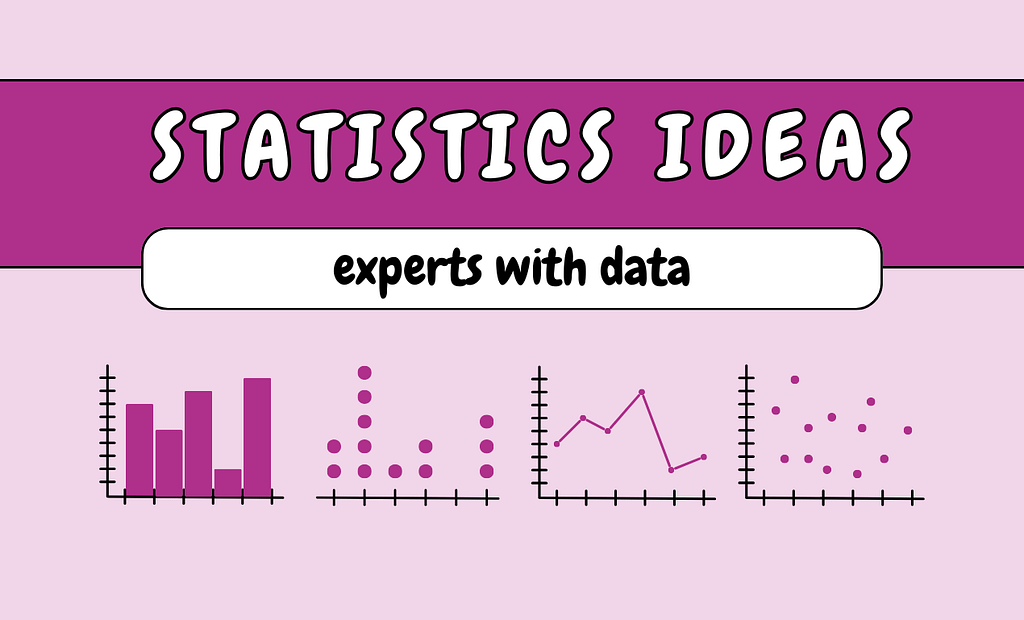The Top Ten Statistics Ideas for Experts Working with Data

Statistics form the backbone of data science, providing the tools and frameworks necessary to extract meaningful insights from raw data. For experts in the field, a deep understanding of key statistical concepts is crucial for making informed decisions, building robust models, and ensuring the integrity of their analyses. Here are the top ten statistical ideas that every data expert should master.
1. Descriptive Statistics
Descriptive statistics summarize and describe the main features of a dataset. Key metrics include:
- Mean: The average value.
- Median: The middle value when data is sorted.
- Mode: The most frequently occurring value.
- Standard Deviation: A measure of the dispersion of data points around the mean.
These metrics provide a snapshot of the data’s central tendency, spread, and overall distribution, enabling quick and effective initial analysis.
2. Probability Distributions
Understanding probability distributions is fundamental for modeling random processes. Common distributions include:
- Normal Distribution: Symmetrical, bell-shaped distribution characterized by the mean and standard deviation.
- Binomial Distribution: Describes the number of successes in a fixed number of binary trials.
- Poisson Distribution: Models the number of events occurring within a fixed interval of time or space.
Recognizing the appropriate distribution for your data is essential for accurate modeling and inference.
3. Hypothesis Testing
Hypothesis testing is a statistical method used to make inferences or draw conclusions about a population based on sample data. Key concepts include:
- Null Hypothesis (H0): Assumes no effect or no difference.
- Alternative Hypothesis (H1): Assumes an effect or a difference exists.
- p-Value: The probability of observing the data if the null hypothesis is true.
- Type I and Type II Errors: False positive and false negative errors, respectively.
Hypothesis testing helps determine the statistical significance of results, guiding decision-making processes.
4. Confidence Intervals
Confidence intervals provide a range of values within which the true population parameter is expected to fall, with a certain level of confidence (e.g., 95%). They offer more information than point estimates by accounting for sampling variability and providing a measure of precision.
5. Regression Analysis
Regression analysis is used to model relationships between variables. Common types include:
- Linear Regression: Models the relationship between a dependent variable and one or more independent variables using a linear equation.
- Logistic Regression: Used for binary outcome variables.
- Polynomial Regression: Models nonlinear relationships by including polynomial terms.
Regression analysis is crucial for predicting outcomes, understanding relationships, and identifying trends.
6. ANOVA (Analysis of Variance)
ANOVA tests whether there are statistically significant differences between the means of three or more groups. It extends the t-test to multiple groups, helping to determine if observed variations are due to genuine differences or random chance.
7. Principal Component Analysis (PCA)
PCA is a dimensionality reduction technique that transforms data into a new coordinate system, where the greatest variance lies along the first principal component, the second greatest variance along the second component, and so on. It is widely used for:
- Reducing data dimensionality.
- Identifying patterns.
- Visualizing high-dimensional data.
PCA helps simplify data without significant loss of information, making it easier to analyze and interpret.
8. Bayesian Statistics
Bayesian statistics incorporates prior knowledge or beliefs, along with current evidence, to update the probability of a hypothesis being true. Key concepts include:
- Prior Probability: Initial belief before seeing the data.
- Likelihood: Probability of the observed data given the hypothesis.
- Posterior Probability: Updated belief after considering the data.
Bayesian methods offer a flexible approach to statistical inference, especially in complex and uncertain environments.
9. Clustering Techniques
Clustering is an unsupervised learning method used to group similar data points together. Common algorithms include:
- K-Means Clustering: Partitions data into K clusters based on similarity.
- Hierarchical Clustering: Builds a tree of clusters by either merging or splitting existing clusters.
- DBSCAN (Density-Based Spatial Clustering of Applications with Noise): Groups data based on density and can identify outliers.
Clustering helps uncover hidden patterns and structures in data, facilitating segmentation and exploratory analysis.
10. Time Series Analysis
Time series analysis involves analyzing data points collected or recorded at specific time intervals. Key techniques include:
- ARIMA (AutoRegressive Integrated Moving Average): Combines autoregression, differencing, and moving average components to model time series data.
- Exponential Smoothing: Applies weighted averages to past observations to forecast future values.
- Seasonal Decomposition: Breaks down time series data into trend, seasonal, and residual components.
Time series analysis is essential for forecasting, trend analysis, and identifying seasonal patterns.
Table of Contents
Conclusion
Mastering these ten statistical ideas equips data experts with the necessary tools to analyze, interpret, and make informed decisions based on data. By understanding and applying these concepts, experts can ensure the accuracy, reliability, and significance of their analyses, ultimately driving better outcomes in their respective fields. Whether you are dealing with simple descriptive statistics or complex Bayesian models, a solid grasp of these principles is crucial for success in the ever-evolving landscape of data science and analytics.
